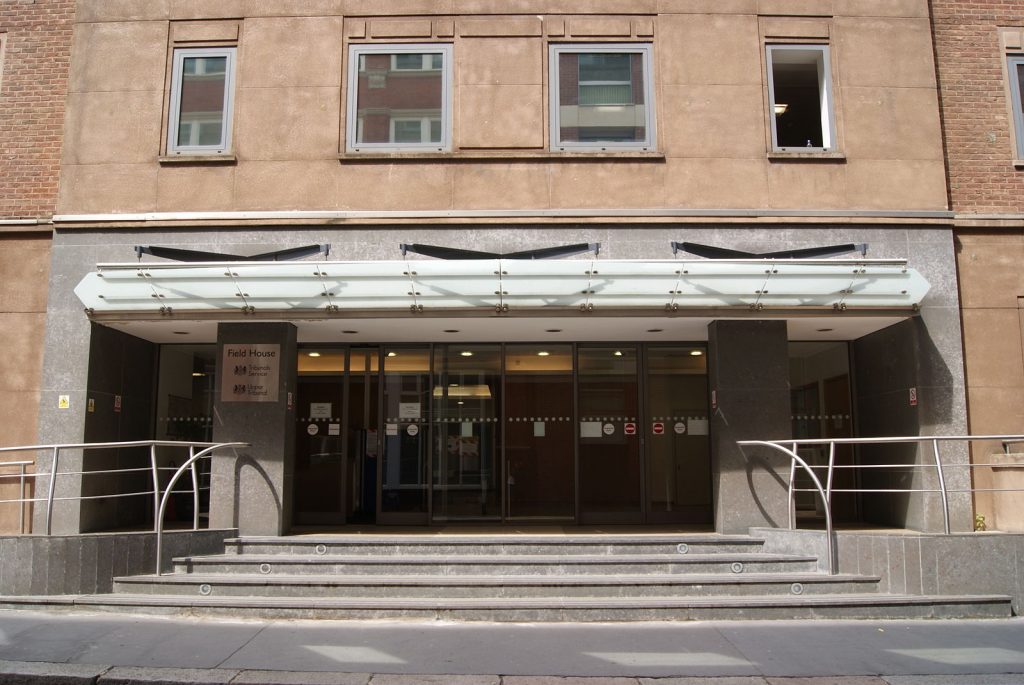This blog post looks at appealing First-tier Tribunal refusals in asylum and immigration cases at the Upper Tribunal. It does not address judicial reviews (most of which are heard at the Upper Tribunal in asylum/immigration cases). See the Toolkit for more information on judicial reviews.
This post is written assuming you do not have a lawyer as we know many people cannot find a lawyer to represent them. If you have a lawyer, they will be applying for permission/appealing for you, and will give you advice about the proceedings on the day. If you want a friend or volunteer to assist you during the hearing, you may be able to arrange this – this person is often called a ‘McKenzie friend’.
McKenzie friend
A McKenzie friend is usually an English-speaking friend, relative or volunteer who can assist you in a court hearing if you do not have a lawyer. If it is a volunteer, it is usually someone who is not qualified to give legal advice, but may have experience of the legal system. They are not usually able to represent you but can assist you in gathering evidence to support your case, preparing witness statements and/or written legal arguments.
If they support you at a court hearing, they cannot answer questions for you but can assist you in making notes of what happens at the hearing, and in some cases also giving you assistance in making submissions to the court.
You should tell the clerk at the Tribunal/hearing centre that you have someone with you to assist you. You should also ask the judge at the start of the hearing for permission to have assistance from such your McKenzie friend. The judge may ask what relevant experience (if any) the person concerned has, whether he or she has any interest in the case and that he or she understands the role and the duty of confidentiality that arises if consent is given.
See this guidance.
The Upper Tribunal
This is part of the Immigration and Asylum Chamber. If your appeal is refused at the First-tier Tribunal, you can apply for permission to appeal at the Upper Tribunal if you think the First-tier Tribunal Judge made an error in the way they applied the law in deciding your case.
Examples of errors of law include:
- situations where a judge has made a mistake about the meaning of the Immigration Rules;
- when a judge has not followed a binding decision of a higher court;
- when a judge has overlooked important evidence;
- when a judge made a decision that was not reasonably open to him or her on the evidence;
- when a judge has misunderstood legislation (this means a piece of law created by the State, such as an Act of Parliament);
- or where there has been unfairness in the way matters have proceeded.
It is very important that in applying for permission to appeal, you set out how you believe the First-tier Tribunal made an error in law. You cannot simply say you disagree with their decision. You will therefore need to set out your reasons in ‘Grounds of Appeal’.
These do not have to be very long but they should be clear. Set them out in a separate document, which you will include with your application to appeal.
A judgment from 2025 said that it should be possible for applicants who are unrepresented to explain in a few short sentences why there has been an error of law. The Upper Tribunal said:
Each point of law, where there is more than one, must be clearly identified as a numbered ground of appeal with sufficient detail so that the Tribunal and the parties are able to identify the essential issue raised by that ground. The grounds of appeal will rarely need to be lengthy. Each ground of appeal should identify succinctly, in clearly numbered paragraphs or (sub paragraphs):
a) The relevant passage(s) in the decision of the First Tier Tribunal.
b) Any relevant legislation only to the extent necessary to do so.
c) Any legal cases that the judge should have followed that is capable of supporting the ground.
d) A short explanation to support the ground stating why the decision is legally wrong.
Permission
1. Apply for permission at the First-tier Tribunal
First, you apply to the First-tier Tribunal for permission to appeal at the Upper Tribunal.
To apply for permission from the First-tier Tribunal to appeal at the Upper Tribunal, you need to fill out a form called IAFT-5. You should be sent a form with a copy of the First-tier Tribunal’s refusal of your case. You can also find it, along with guidance notes, at the Tribunal website.
You can complete the form online here using the PDF function. If you need a printed version, contact your local court.
This form should be completed within 14 days from the date the First-tier Tribunal decision was sent to you. If you are outside the UK you have 28 days. Remember to include the full reasons why you think the Tribunal made an error of law.
Most of these applications will be decided on the papers, without an oral hearing.
2. Apply for permission at the Upper Tribunal
If the First-tier Tribunal do not grant you permission to appeal at the Upper Tribunal, you can apply directly to the Upper Tribunal for permission to appeal there.
To apply for permission directly from the Upper Tribunal, you need to complete a form called IAUT-1. You can find the form here and fill it out using the PDF function. If you need a printed version, contact your local court.
This form should be completed within 14 days from the date the First-tier Tribunal decision was sent to you. If you are outside the UK you have 30 days. Remember to include the full reasons why you think the Tribunal made an error of law.
If you send the application to the Upper Tribunal so that it will arrive later than the deadline, your application must include a request for an extension of time and explanation of why you were unable to send it in time. The Upper Tribunal might not accept this, however, and may not consider your application for permission.
If permission is refused
It is very difficult to appeal further if permission is refused. You may want to consider whether you are able to put together a fresh claim.
If you are granted permission to appeal
If you are granted permission to appeal to the Upper Tribunal, there will be either a hearing before one or more Upper Tribunal Judges or the case may be decided without an oral hearing on the papers available.
The Upper Tribunal will send you Directions setting out the steps that are required to be taken before the hearing. Make sure you read these carefully, and follow the instructions within the time-limits given in the Directions.
In 2023, new guidance was issued on how to file an appeal at the Upper Tribunal online – which is the new default method. In order to file an appeal using the CE-File system you will first need to register as an E-Filer by following the instructions here. Electronic bundles should be provided in a PDF format, and must have page numbers. Read the guidance carefully to make sure you submit your appeal with the correct formatting.
You may wish to submit written submissions (a summary of your case) and/or a skeleton argument (sets out the main arguments you wish to rely upon at the hearing) to expand on the grounds you used to apply for permission to appeal. You should explain in these documents why you think the First-tier Tribunal made an error of law. If you wish to submit these documents, you need to send them to the Upper Tribunal and the Home Office in advance, as per the instructions in the Directions.
If you want the Upper Tribunal to consider new evidence, you must submit it to the Tribunal and the Home Office in advance, explaining why it has not been submitted before (in your original application or first appeal).
The hearing
You will receive notice of the hearing that will tell you the date, time and location of the hearing. The Tribunal’s guidance suggests arriving at least an hour before the start of your hearing (either 10am or 2pm), to allow for time getting through security into the Tribunal.
The Tribunal Guidance from 2013 which is still in use says:
- You need to bring with you all the documents that you consider are important to your case. These should include copies or the originals of the documents that you have already filed with the Tribunal and served on the Home Office in response to the Directions.
- On arrival at the Tribunal make your way to the reception area where you will find on a notice board a list of the day’s hearings. Report to the receptionist who will tell you where your appeal will be heard and the name of the judge or panel who will hear it. Unless you are asked to wait in the reception area, you should go to the allocated court room and wait outside the door.
- You will find that shortly before the start of the hearing, you will be approached by a court official who is called a clerk, who will arrange for you to take your place in the hearing room. If no one has approached you, then go back to reception for assistance.
- Nearly all hearings are open to the public. If your appeal is not the first in the list, you can normally still go into the courtroom and listen to other cases. You may find this helpful, as you will see how the judge runs the court. Alternatively you can remain outside until your case is called.
- It may be that the order of the list will change so that the cases are not heard in the same order as they appear in the list. It is important to keep in touch with the clerk if you are waiting outside the hearing room.
- Phones must be switched off whilst in the court room. You are not permitted to record the proceedings or take any photographs.
- Everyone in the court room is expected to stand when the judge or panel enter. You will then be invited to sit. After that there is no need to stand until the end of the hearing when the judge leaves the room. You can address the judge whilst seated. The judge should be addressed as Sir or Madam as appropriate.
There are some cases in which you might have to attend your hearing via video link. If you would like to attend your hearing via video link, you must apply in writing as soon as possible after permission has been granted. For more information about the video hearing process, read the guidance here.
Making your argument
You might want to write down a summary of the key points of your argument, to remind yourself what you want to say. You can give a copy of this to the judge if you want, as long as you also give a copy to the Home Office presenting officer as well.
If you have several points to make – for example, if you think the First-tier Tribunal made an error of law in three different ways – make this clear. You can say ‘my first reason is’, ‘my second reason is’ etc. Try to stick to one reason at a time, without mixing up different areas of argument (though if the areas of argument are connected, you can say this).
You can’t interrupt the judge, the Home Office presenting officer or a witness if they are in the middle of talking. If you think the judge is moving on to the next part of the hearing and you haven’t finished what you wanted to say, you can raise your hand.
If it is you who has been granted permission to appeal, you will make your argument first. The Home Office presenting officer will then respond, and then you will have a final chance to sum-up or respond to what the Home Office has said.
The decision
The judge will either make a decision on the day, or they may ‘reserve’ their decision and let you know at a later date.
If the judge makes the decision on the day that the First-tier Tribunal made an error of law:
- they may proceed to hear the appeal in order to make a fresh decision immediately
- they made decide that it is necessary to hear new evidence or consider new documents and so they will arrange a hearing at a later date
- the judge will decide whether any findings of fact made by the First-tier Tribunal are to be preserved, even though the First-tier Tribunal’s decision has been set aside.
- the judge may send the case back to the First-tier Tribunal (‘remits the case’) to re-decide the case, with no need for consideration of new evidence. The judge may give the First-tier Tribunal directions to make sure the error of law is not repeated. This is a possible outcome if the Upper Tribunal judge agrees with the First-tier Tribunal on findings of fact.
- the judge may order the First-tier Tribunal to rehear the case, with a chance to hear new evidence. This is a possible outcome if the Upper Tribunal judge decides the findings of fact by the First-tier Tribunal can’t be relied upon.
If you lose your case at the Upper Tribunal
If you were granted permission to appeal at the Upper Tribunal, your case was heard, but the judge decided that the First-tier Tribunal did not make an error of law, there is the option of appealing that finding at the Court of Appeal. You will need to apply for permission to do this.
Accessing this level of the court process without a legal representative is very tricky.













Discussion: